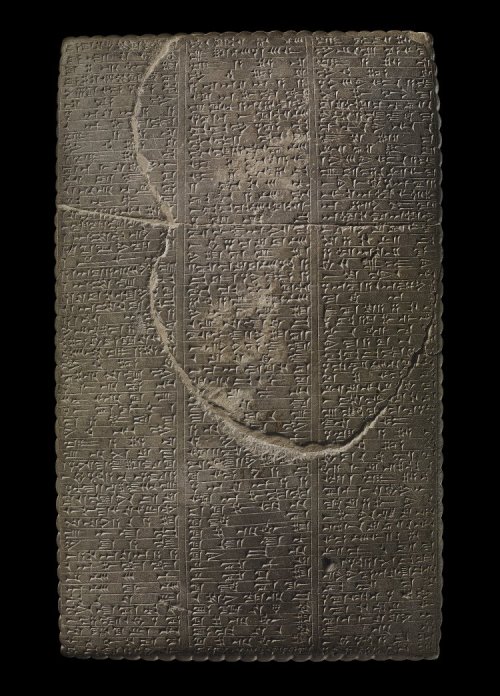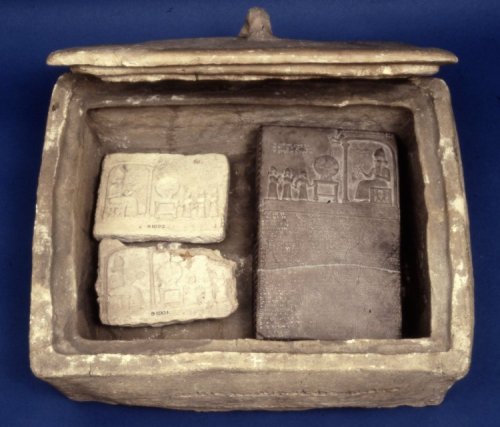Ishtar
” … Both phases of the goddess, as the gracious mother and as the grim Amazon, are dwelt upon in one of the finest specimens of the religious literature of Babylonia in which a penitent sufferer, bowed down with sickness and misfortune, implores Ishtar to grant relief. [3] The hymn is addressed to the goddess of Uruk but she has become the general mother-goddess and is instead of Nana addressed as Ishtar. Ishtar is here identified with the planet Venus and assigned to a place therefore in the heavens.
As such she is called “the daughter of Sin,” the moon-god. She is thus the daughter of Anu, of Enlil and of Sin at one and the same time, a further indication that such epithets merely symbolize a relationship to various gods, according to the traits assigned to her. The composition, too long to quote entirely, begins:
“I pray to thee, mistress of mistresses, goddess of goddesses,
Ishtar, queen of all habitations, guide of mankind,
Irnini [4] praised be thou, greatest among the Igigi [5]
Powerful art thou, ruler art thou, exalted is thy name,
Thou art the light of heaven and earth, mighty daughter of Sin,
Thou directest the weapons, arrangest the battle array,
Thou givest commands, decked with the crown of rulership,
lady, resplendent is thy greatness, supreme over all gods.
Where is thy name not! Where is thy command not!
Where are images of thee not made! Where are thy shrines not erected!
Where art thou not great? Where not supreme!
Anu, Enlil and Ea have raised thee to mighty rulership among the gods,
Have raised thee aloft and exalted thy station among all the Igigi.
At the mention of thy name, heaven and earth quake,
The gods tremble, the Anunnaki quake.
To thy awe-inspiring name mankind gives heed,
Great and exalted art thou!
All dark-headed ones, [6] living beings, mankind pay homage to thy power.
I moan like a dove night and day,
I am depressed and weep bitterly,
With woe and pain my liver is in anguish.
What have I done, my god and my goddess — I ?
As though I did not reverence my god and my goddess, am I treated.
I experience, my mistress, dark days, sad months, years of misfortune.”
As the planet Venus, the movements of Ishtar in the heavens form a basis for divining what the future has in store. [7] The prominent part taken by the observation of Venus-Ishtar in Babylonian-Assyrian astrology is reflected in many of the hymns to her. The influence of the priestly speculations in thus combining the popular animistic conceptions of the gods and goddesses with points of view derived from the projection of the gods on to the starry heavens is one of the features of the religion of Babylonia and Assyria.
Ishtar under one name or the other becomes a favorite subject for myths symbolizing the change of seasons, her period of glory when the earth is in full bloom being the summer followed by the rainy and winter months when nature decays, and which was pictured as due to the imprisonment of the goddess in the nether world. She takes her place in popular tales, half legendary and half mythical, and we have a number of compositions [8] further illustrating how the popular myths and tales were embodied into the cult.”
Morris Jastrow, The Civilization of Babylonia and Assyria, 1915, pp. 234-6.

![Illustration: Tablet sculptured with a scene representing the worship of the Sun-god in the Temple of Sippar. The Sun-god is seated on a throne within a pavilion holding in one hand a disk and bar which may symbolize eternity. Above his head are the three symbols of the Moon, the Sun, and the planet Venus. On a stand in front of the pavilion rests the disk of the Sun, which is held in position by ropes grasped in the hands of two divine beings who are supported by the roof of the pavilion. The pavilion of the Sun-god stands on the Celestial Ocean, and the four small disks indicate either the four cardinal points or the tops of the pillars of the heavens. The three figures in front of the disk represent the high priest of Shamash, the king (Nabu-aplu-iddina, about 870 B.C.) and an attendant goddess. [No. 91,000.]](https://therealsamizdat.com/wp-content/uploads/2015/01/an00582752_001_l.jpg?w=500)


![Illustration: Tablet inscribed with a list of the Signs of the Zodiac. [No. 77,821.]](https://therealsamizdat.com/wp-content/uploads/2015/01/015.png?w=500)
 .
. , Ilu Nagar Ilu Nagar, i.e., “the workmen gods,” about whom nothing is known.
, Ilu Nagar Ilu Nagar, i.e., “the workmen gods,” about whom nothing is known.